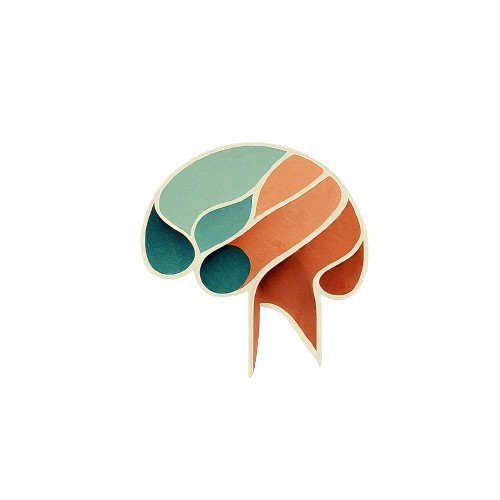Bipolar disorder is a complex mental health condition characterized by alternating periods of mania and depression. While many individuals find relief through traditional treatments like psychotherapy and medication, some cases of severe or treatment-resistant bipolar disorder require more advanced interventions. Two such treatments that have gained prominence in recent years are Transcranial Magnetic Stimulation (TMS) and Electroconvulsive Therapy (ECT). In this guide, we’ll dive into the differences, similarities, and effectiveness of TMS and ECT in treating bipolar disorder.
Understanding Bipolar Disorder
Before diving into the treatments, it’s crucial to understand bipolar disorder. This condition is characterized by extreme mood swings that include emotional highs (mania or hypomania) and lows (depression). These mood episodes can significantly impact a person’s energy, activity levels, and ability to function in daily life.
What is Transcranial Magnetic Stimulation (TMS)?
Transcranial Magnetic Stimulation is a non-invasive procedure that uses magnetic fields to stimulate specific areas of the brain. Here’s what you need to know about TMS in the context of bipolar disorder:
How TMS Works for Bipolar Disorder
- Magnetic Pulses: TMS delivers repetitive magnetic pulses to the prefrontal cortex, an area of the brain involved in mood regulation.
- Targeted Stimulation: The magnetic pulses activate neurons in the targeted brain region, potentially improving mood stability.
- Non-Invasive: TMS doesn’t require anesthesia or cause seizures, unlike ECT.
Benefits of TMS for Bipolar Disorder
- Fewer Side Effects: TMS is associated with minimal side effects, making it a more comfortable option for many patients.
- No Cognitive Impairment: Unlike ECT, TMS doesn’t typically cause memory loss or cognitive issues.
- Outpatient Procedure: Patients can receive TMS treatments without hospitalization and continue their daily activities.
- Potential for Maintenance: TMS may be used as a maintenance therapy to help prevent mood episodes.
Potential Drawbacks of TMS for Bipolar Disorder
- Limited FDA Approval: While TMS is FDA-approved for major depression, its use for bipolar disorder is considered off-label.
- Time-Intensive: TMS typically requires multiple sessions over several weeks.
- Not Suitable for All: Patients with metal implants or certain medical conditions may not be eligible for TMS.
- Effectiveness Varies: While effective for many, TMS may not work for all patients with bipolar disorder, especially during acute manic episodes.
What is Electroconvulsive Therapy (ECT)?
Electroconvulsive Therapy is a procedure that involves passing electrical currents through the brain to trigger a brief seizure. Despite its controversial history, modern ECT is a safe and effective treatment for various aspects of bipolar disorder. Here’s what you should know about ECT:
How ECT Works for Bipolar Disorder
- Electrical Stimulation: Controlled electrical currents are applied to the patient’s brain while under general anesthesia.
- Induced Seizure: The electrical stimulation causes a brief seizure, which is believed to alter brain chemistry and improve mood stability.
- Series of Treatments: ECT is typically administered in a series of treatments over several weeks.
Benefits of ECT for Bipolar Disorder
- Rapid Response: ECT often provides faster relief from both depressive and manic symptoms compared to other treatments.
- High Efficacy: ECT has a high success rate, particularly for treatment-resistant bipolar disorder.
- Versatility: ECT can be effective for both the depressive and manic phases of bipolar disorder.
- Lifesaving Potential: For patients with severe suicidal ideation or acute mania, ECT can provide rapid, lifesaving relief.
Potential Drawbacks of ECT for Bipolar Disorder
- Memory Issues: Some patients experience short-term memory loss, and in rare cases, longer-term memory problems.
- Stigma: Despite improvements in technique, ECT still carries a stigma that may deter some patients.
- Requires Anesthesia: As an invasive procedure, ECT requires general anesthesia, which carries its own risks.
- Potential for Manic Switch: In rare cases, ECT may trigger a switch from depression to mania in bipolar patients.
Comparing TMS and ECT for Bipolar Disorder: Key Differences
Now that we’ve explored both treatments individually, let’s compare TMS and ECT side by side in the context of bipolar disorder:
- Invasiveness
- TMS: Non-invasive, no anesthesia required
- ECT: Invasive, requires general anesthesia
- Side Effects
- TMS: Minimal side effects, typically limited to headaches or scalp discomfort
- ECT: Potential for memory loss, confusion, and physical side effects like muscle aches
- Treatment Duration
- TMS: Usually requires 20-30 sessions over 4-6 weeks
- ECT: Typically involves 6-12 treatments over 2-4 weeks, with potential maintenance treatments
- Effectiveness for Bipolar Phases
- TMS: More commonly used for bipolar depression; limited evidence for efficacy in mania
- ECT: Effective for both depressive and manic phases of bipolar disorder
- Patient Experience
- TMS: Patients remain awake and can resume normal activities immediately after treatment
- ECT: Patients are under anesthesia and may need recovery time after each session
- FDA Approval Status
- TMS: FDA-approved for major depression; off-label use for bipolar disorder
- ECT: FDA-approved for major depressive episodes associated with major depressive disorder or bipolar disorder
Choosing Between TMS and ECT for Bipolar Disorder
Deciding between TMS and ECT for bipolar disorder is a complex process that should involve careful consideration with a mental health professional. Factors to consider include:
- Current Mood State: ECT may be more appropriate for acute manic or mixed episodes, while TMS might be considered for bipolar depression.
- Previous Treatment Response: If a patient has not responded to multiple medications and therapies, ECT might be recommended.
- Medical History: Certain medical conditions or implants may make one treatment more suitable than the other.
- Patient Preference: Some patients may prefer the non-invasive nature of TMS, while others may opt for the potentially faster results of ECT.
- Cognitive Concerns: If preserving cognitive function is a high priority, TMS may be the preferred option.
- Severity of Symptoms: For severe, life-threatening symptoms or catatonia, ECT may be the treatment of choice.
The Future of Bipolar Disorder Treatment: Combining Therapies
As research in the field of mental health continues to advance, there’s growing interest in combining different treatment modalities to achieve the best outcomes for patients with bipolar disorder. Some emerging approaches include:
- TMS as a Maintenance Therapy: After successful mood stabilization with medication or ECT, TMS might be used as a maintenance therapy to prevent relapse.
- Combining TMS with Psychotherapy: Integrating TMS sessions with targeted psychotherapy may enhance overall treatment effectiveness for bipolar disorder.
- Personalized Treatment Protocols: Using genetic testing and brain imaging to tailor TMS or ECT protocols to individual patients with bipolar disorder.
- Novel Brain Stimulation Techniques: Researchers are exploring new forms of brain stimulation that may offer the benefits of both TMS and ECT with fewer side effects, specifically targeting the unique needs of bipolar patients.
Patient Experiences: Real-World Perspectives on Bipolar Disorder Treatment
While clinical data is crucial, hearing from patients who have undergone TMS or ECT for bipolar disorder can provide valuable insights:
- TMS Patient Testimonial: “After years of struggling with bipolar depression and trying countless medications, TMS gave me stability I hadn’t experienced before. The treatments were easy to fit into my schedule, and I started noticing improvements in my depressive symptoms after a few weeks.”
- ECT Patient Testimonial: “ECT was a last resort for my treatment-resistant bipolar disorder, but it truly saved my life. It helped control both my manic and depressive episodes. The memory issues were challenging at first, but they improved over time. The relief from my severe symptoms was worth it.”
Hope for Treatment-Resistant Bipolar Disorder
Both TMS and ECT represent significant advancements in the treatment of severe and treatment-resistant bipolar disorder. While they work differently and have distinct advantages and disadvantages, both therapies offer hope to patients who have not found relief through traditional treatments.
It’s important to remember that the choice between TMS and ECT should be made in consultation with a qualified mental health professional specializing in bipolar disorder. They can provide personalized recommendations based on your specific situation, medical history, and treatment goals.
As research continues and technology advances, we can expect even more refined and effective treatments for bipolar disorder in the future. For now, TMS and ECT stand as powerful tools in the management of bipolar disorder, offering new paths to stability for those who need it most.
If you or someone you know is struggling with bipolar disorder, don’t hesitate to reach out to a mental health professional to discuss all available treatment options, including TMS and ECT. Remember, there is always hope, and with the right treatment approach, better management of bipolar disorder is possible.



